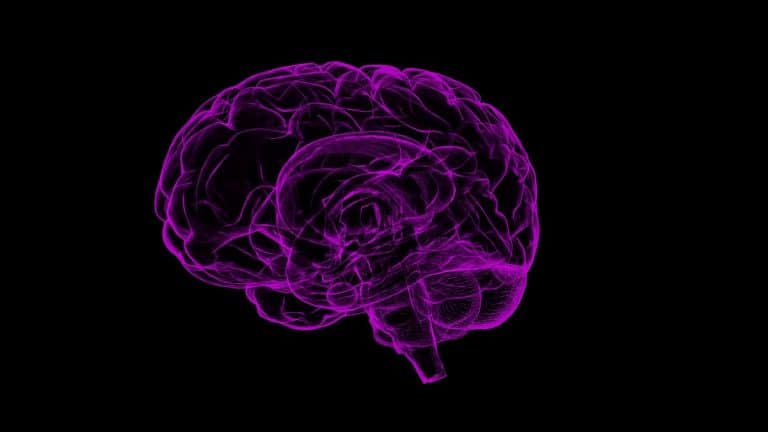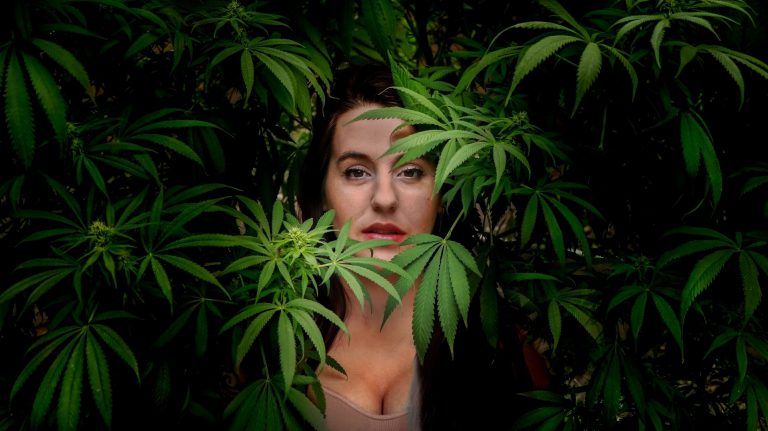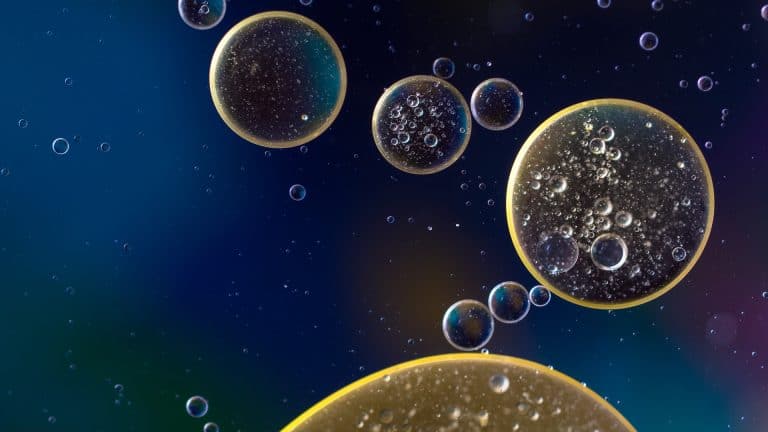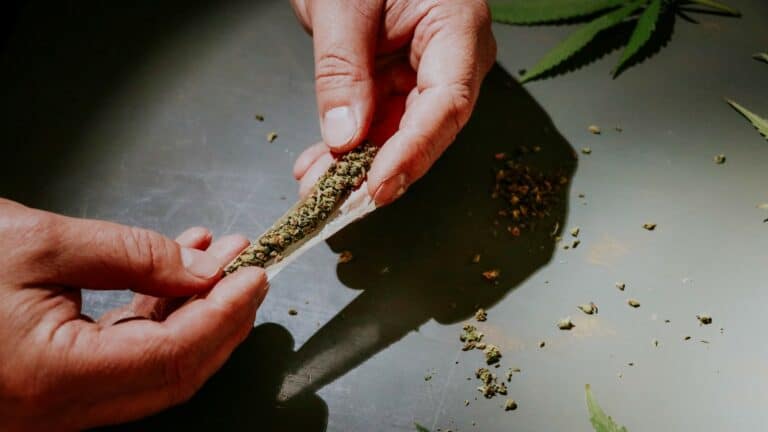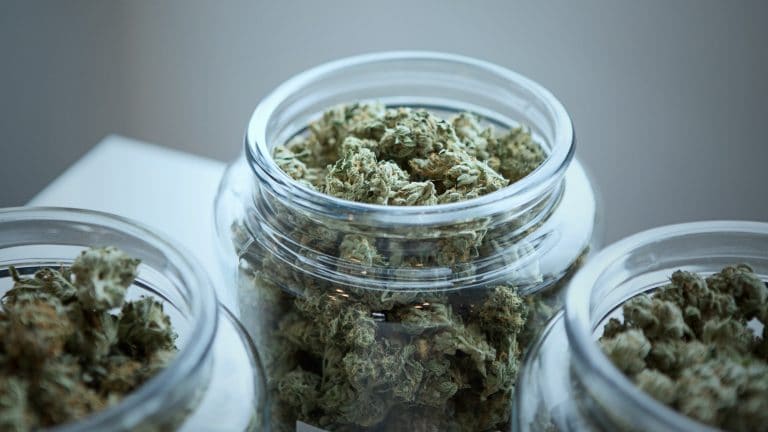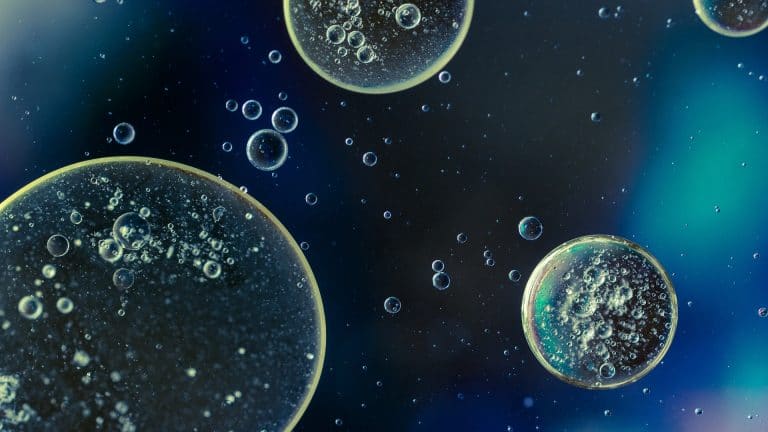What Is CBD & Why Is It So Buzzworthy?
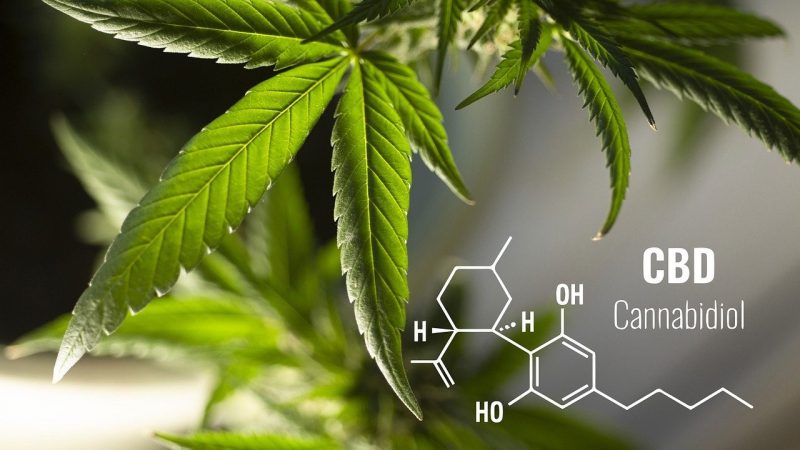
What is CBD, and is it really as good as it’s said to be? Is it the same as doing drugs? If not, why isn’t it still entirely accepted on the federal level? Or perhaps it’s been fully legalized since the hemp bill has finally been approved?
Luckily for you, we have the answers to all your doubts and qualms right here.
In this article, we’ll talk about CBD, its use, types, benefits, and side effects. In other words, you’ll find out what CBD really is and why it’s so special.
So, let’s get started!
What Does CBD Stand For, and Where Can You Find It?
CBD stands for cannabidiol, a compound naturally found in the cannabis or hemp plant, though it can also be produced synthetically.
CBD was discovered in 1940 by Dr. Roger Adams and his team at the University of Illinois. In 1942, Adams won a patent for his method of isolating CBD. Additionally, he was the first researcher who identified the “bad boy,” THC.
Now that you’ve learned the secret behind the abbreviation CBD and its meaning, you should know that CBD is just one of many cannabinoids out there (there are over 113 of them).
We should also mention that you can find cannabinoids in other places apart from the Cannabis sativa, Cannabis indica, and Cannabis ruderalis — they also naturally occur in our bodies.
Endocannabinoids are similar to cannabinoids from Cannabis sativa and can be found in our brains, muscles, and circulating cells.
What Is CBD Made From?
CBD is derived from the flower of the cannabis plant. When the substance gets extracted from the plant, it’s mixed with fatty carrier bases (e.g., hemp oil or coconut oil).
CBD can be hemp-derived and marijuana-derived. CBD sourced from industrial hemp contains no more than 0.3% THC, while marijuana-derived CBD contains over 0.3% THC.
CBD Usage & Benefits
What is CBD used for today? This substance can be used to treat symptoms of various health issues, so its popularity hardly comes as a surprise.
CBD is most commonly used to help alleviate:
- Stress and anxiety
- Troubles with falling and staying asleep
- Chronic pain
- Inflammation caused by arthritis
- The symptoms of cancer treatment (e.g., vomiting, nausea, and pain), etc.
CBD is best known for its effectiveness in treating childhood epilepsy syndromes (e.g., Dravet syndrome and Lennox-Gastaut syndrome).
Many studies prove its beneficial effects, especially when it comes to reducing the frequency of seizures.
You’ve probably heard about Charlotte Figi, the girl who popularized CBD when she started using it as an additional treatment for Dravet syndrome.
In her case, CBD reduced the number of seizures, from one attack every 30 minutes to zero seizures for seven days.
Epidiolex, a drug that contains 100 mg of CBD per ml, is the only marijuana-derived medicine that’s been approved by the FDA. This prescription medicine is used to treat the two rare forms of epilepsy mentioned above — Dravet syndrome and Lennox-Gastaut syndrome.
Since Epidiolex doesn’t contain any traces of THC, it’s perfectly safe to be used by children over two years of age.
CBD’s Legal Status
Is CBD a drug? CBD’s status in terms of legality and whether it should be considered a drug or not has long been a million-dollar question.
CBD from industrial hemp doesn’t contain high levels of THC (under 0.3%), so it can’t get you high the way cannabis would. So, technically, it isn’t a drug.
But what does this mean? Is CBD legal or not?
As for the States, thanks to the Hemp Farming Act, CBD extracted from hemp plants has been made legal in most states (while it’s fully legal in some states, others still heavily restrict its use).
This was good news for the CBD industry, which has been growing continuously, becoming one of the world’s most profitable and fastest-growing industries. As a result, the US CBD market is expected to reach $13.39 billion by 2024. Impressive, right?
Additionally, since marijuana is still labeled as a Schedule 1 drug, growing cannabis at home may still be illegal in some states (even if it’s used exclusively for CBD production).
Does CBD Show Up on a Drug Test?
Technically, no, since drug tests don’t screen for CBD.
However, this doesn’t mean you’ll be able to pass the test if you consume certain CBD products. For example, if you use full-spectrum CBD products that contain trace amounts of THC, your drug test might be positive.
Moreover, THC can stay in your system for a long time:
- THC metabolites can be detected in your urine for about 3–15 days after use.
- THC can be detected in blood plasma for up to five hours after use (metabolites can be detected even after about a week).
- THC can be detected in saliva for 72 hours after use (longer if you’re a regular user).
- THC metabolites can be traced in hair 90 days after the last use.
Types of CBD
Now that you know what CBD is, it’s time to learn more about different types of CBD.
Cannabidiol comes in three types:
- Isolate (the purest form of CBD with no other cannabinoids or THC)
- Full-spectrum CBD (it includes 0.3% THC and other components of the plant)
- Broad-spectrum CBD (all cannabis compounds with little to no THC)
What Is CBD Isolate?
CBD isolate is produced by extracting all the cannabis plant’s compounds and substances to get pure cannabidiol in crystal form with no distinctive taste or smell.
What makes it different from full-spectrum and broad-spectrum is that it lacks flavonoids and terpenes. CBD isolate also has zero THC. Although it doesn’t provide the entourage effect, consuming pure CBD can still be beneficial.
What Is CBD Isolate Used For?
According to studies, CBD isolate helps with anxiety, pain and inflammation, epilepsy, and the negative effects of cancer treatment.
Since it doesn’t contain THC, CBD isolate is considered to be a low-risk substance. Be that as it may, it can still cause side effects like diarrhea, insomnia, and irritability.
What Is Full–Spectrum CBD?
Full-spectrum CBD contains various cannabis plant extracts, from terpenes to essential oils, vitamins, fatty acids, and small traces of THC. Many people use full-spectrum products because of the entourage effect.
Full-spectrum is more natural and less processed than CBD isolate. Some studies even imply that full-spectrum CBD is a better option than CBD isolate when it comes to treating pain since it contains both CBD and THC (which are more effective for this purpose if combined).
What Is Full-Spectrum Used For?
Full-spectrum CBD is more potent than pure CBD, given that it contains all of the plant’s compounds. As mentioned before, it can be used for pain and muscle spasm relief, as an antioxidant, and even to treat patients experiencing psychosis.
However, not all people will find full-spectrum CBD useful, especially those who are sensitive to the effects of THC.
What Is Broad–Spectrum CBD?
Broad-spectrum is something in between the full-spectrum and CBD isolate. It contains various compounds (CBC, CBN, terpenes), but it doesn’t necessarily contain THC.
What Is Broad-Spectrum CBD Used For?
Like other types of CBD, broad-spectrum products offer various therapeutic properties (e.g., relaxation, reducing anxiety and pain, improving sleep, etc.).
Most Popular Types of CBD Products
At present, there’s a vast array of CBD-infused products, from delicious edibles to aromatic oils and tinctures.
- CBD oil is perhaps the most important, as it offers a multitude of health benefits and is relatively easy to apply or mix. There’s a considerably large number of products that are infused with CBD oil. Since it’s that vital, we’ll explain how to use CBD oil later in more detail.
- CBD suppositories are used mostly due to their fast absorption (10–15 minutes) and the fact that THC’s “high” effect is mitigated, but the health benefits are preserved.
- CBD edibles come in various shapes and forms (e.g., chocolates, cake pops, brownies, honey, CBD gummies, etc.).
For example, gummy bears infused with CBD are mainly used for treating anxiety disorders and depression. CBD edibles are often advertised as organic and vegan treats, making them appeal to the modern millennial niche.
- CBD beverages include tea, coffee, and even water.
- CBD cream — If you’re always frustrated that creams and lotions offer either moisture, nourishment, or antioxidants against aging (never the full package), try rejuvenating CBD creams. They seem to have it all.
They protect your skin, make it look healthy and radiant, and have even proven helpful in treating acne and psoriasis.
- CBD e-liquid is another product that’s in high demand due to the ongoing craze for electronic vapes.
Obviously, CBD levels vary largely across products, and so do CBD’s effects.
A Closer Look at CBD Oil
What is CBD oil, or CBD tincture, and why is it so popular? CBD oil is a product made by extracting CBD from the cannabis plant. The extract goes through the process of dilution when a carrier oil is added (coconut or hemp seed oil).
CBD oil can be derived from hemp (20%+ CBD, 0.3% THC) or marijuana (10%+ CBD, 20%+ THC).
There are also several extraction methods, the most popular being:
- CO2 extraction
- Oil extraction
- Liquid solvent extraction (e.g., ethanol, oil)
Regardless of the extraction method, CBD remains identical on a molecular level.
Best of all, you can even make CBD oil at home. Just make sure to choose the right strain.
What Color Is CBD Oil?
CBD oil’s color may range from pinkish to dark brown (there are also clear CBD oils).
The color depends on:
- The extraction method
- The filtering technique
- Ingredients
Extraction Method
If CBD is extracted by CO2 extraction, chlorophyll isn’t extracted along with it, so your CBD oil will end up looking golden in color. If the oil is extracted using ethanol, it’ll be deep green because this extraction process allows it to keep chlorophyll and xanthophyll.
Filtering Technique
Filtration can remove some of the plant matter, which will result in color change. Unfiltered CBD oils tend to be green, while the filtered ones lose chlorophyll, and thereby they lose the green hue too. That’s why they appear more golden-colored.
Ingredients
Carrier oils can affect CBD oil’s color. While coconut MTC is typically clear and doesn’t affect CBD oil’s color much, olive oil, hemp seed oil, grape seed oil, and avocado oil can turn it darker (as they’re golden with a hint of green themselves).
Additional ingredients (e.g., flavoring) may also affect CBD oil’s color.
What Is CBD Oil Good For?
CBD oil can help with various health issues.
It can be used to treat:
- Anxiety
- Depression
- Insomnia
- Inflammation
- Cancer symptoms
- Seizures
- Chronic pain
- Certain skin conditions
Anxiety and Depression
CBD oil is very helpful when it comes to dealing with anxiety and depression, mainly because it can help you relax without producing any serious side effects.
Antidepressants can make patients drowsy, and they’re typically quite addictive. Contrary to popular belief, CBD isn’t addictive, which is probably one of its best benefits.
Chronic Pain
Many people use CBD for pain (especially for treating chronic pain). CBD is released slowly and gradually into our system, reducing inflammation and pain.
Cancer Symptoms
CBD has come under the spotlight mainly due to its role in treating cancer symptoms and cancer treatment side effects (e.g., nausea, vomiting, pain, etc.).
But more thorough research should be done in the future to find out just how much CBD can be of help in fighting cancer cells.
Seizures
The benefits of CBD oil are also reflected in its potential to help with seizures. Studies show that CBD may help treat seizures caused by Lennox-Gastaut syndrome, Dravet syndrome, and tuberous sclerosis complex syndrome.
Insomnia
You can also use CBD oil to fight insomnia.
Studies suggest that CBD might be the right thing for your sleep troubles. If you have problems falling asleep, you could consider using full-spectrum CBD. According to researchers, the presence of THC makes all the difference, as this substance can decrease sleep latency.
However, consuming marijuana strains with higher THC levels can reduce the amount of REM sleep.
As you know, the REM phase is responsible for our dreams, so it doesn’t come as a surprise that regular marijuana consumers often report a lack of dreams or an inability to remember their dreams.
Dreaming is vital to humans because it helps us de-escalate our emotional reactivity and sensibility. It also helps us stimulate our problem-solving skills and creativity.
Can CBD Oil for Sleep Cause Side Effects?
Yes, it can. Besides the common side effects (e.g., dry mouth, diarrhea, fatigue, changes in appetite, etc.), some CBD users report having more lucid and vivid dreams.
Skin Conditions
CBD is frequently used in beauty products because it has anti-inflammatory, antibacterial, and antifungal properties. There’s also some evidence that this substance can help reduce inflammation, regulate oil production, and keep the skin well-hydrated.
Studies show that CBD can reduce the excess production of sebum (an oily substance produced in the skin) and thereby reduce the severity of acne.
Moreover, it can stop inflammatory cytokines from getting activated (and cytokines are the main culprits for acne formation).
Additionally, there’s some evidence that CBD can help with eczema, psoriasis, pruritus, and other inflammatory skin conditions.
What Is the Difference Between Hemp Oil and CBD Oil?
There are two types of hemp oil:
- Hemp seed oil (which contains 0% THC and little to no CBD)
- Hemp-derived CBD oil (which contains 20%+ CBD and up to 0.3% THC)
CBD oil can also be marijuana-derived and contain 10%+ CBD and 20%+ THC (but there’s an easy way to distinguish it from your regular hemp-derived oil — just take a look at the THC content).
Since hemp seed oil doesn’t contain CBD, it won’t deliver the same therapeutic potential as CBD oil. However, hemp seed oil isn’t to be underestimated. It’s still full of minerals, vitamins, and essential fatty acids.
What Is the Best Way to Take CBD Oil?
There’s no universal best way to use CBD oil. The way you take it will depend on your needs and on the product you’re taking.
The best way to use CBD oils and tinctures is to put them directly under your tongue and let them sit there for at least a minute before swallowing them. This way, CBD will reach your bloodstream faster.
How Does CBD Oil Make You Feel?
There’s no universal answer to this question. CBD oil’s effects will depend on the product you’re using, the dosage, and your overall state.
On paper, CBD should make you feel less stressed.
It’s important to mention that CBD won’t make you feel high since it lacks THC, the main psychoactive component found in cannabis (0.3% THC won’t give you a buzz). Furthermore, it’ll take some time before you actually feel its effects (from 3–7 days to 2–4 weeks).
Additionally, CBD’s effects are biphasic. This means that if you increase the dosage, you’ll also decrease its effectiveness because your body will build a tolerance to the substance.
What Is the Shelf Life of CBD Oil?
CBD oil can last 14–24 months.
While you can still use your CBD oil that’s older than two years (it’s highly likely it won’t make you sick), you won’t be able to experience its full effects since the oil will gradually start losing its potency.
Luckily, proper storage can help you keep your CBD oil fresh for longer. You should just avoid heat, light, moisture, and excess exposure to air.
Here are some tips regarding storage:
- Store your CBD oil in a dark, cold place.
- If you use tinctures, don’t leave them open and keep the bottles upright.
- Don’t keep your CBD oil near stoves, radiators, or ovens.
- Don’t keep your CBD oil in your car.
What Are the Side Effects of CBD?
Nothing is perfect, and neither is CBD. Even a substance as astonishing as this one has some flaws — it can produce certain side effects.
However, not everyone will experience side effects upon using CBD. Whether you will or not will entirely depend on your overall health status.
The most common CBD oil side effects include:
- Dry mouth
- Appetite loss
- Nausea
- Diarrhea
- Drowsiness
- Dizziness, etc.
To prevent experiencing side effects resulting from using impure CBD products, make sure you only use the best, reliable CBD oil products available and consume them responsibly.
Interactions With Medications
CBD can also interact with certain medications, so keep that in mind.
It may decrease certain medications’ effectiveness or intensify them (the way grapefruit juice would) and increase the risk of side effects.
CBD can have serious interactions with:
- Warfarin (a blood thinner)
- Amiodarone (a heart rhythm medication)
- Levothyroxine (a thyroid medication)
- Valproate, lamotrigine, clobazam, and other seizure medications.
Final Words
Taking everything said above into consideration, the world has to do even more research to get the final answer to “what is CBD” and what all of its benefits are.
CBD isn’t a drug, it doesn’t get you high, and we have probably yet to grasp its full potential. From deadly diseases to mental issues and common skin care problems, CBD seems to be the answer to all of these.
FAQs
What is cannabis oil?
Cannabis oil is extracted from the cannabis plant, and it’s different from CBD oil in the way that it can get you that “high” feeling (as it always contains a certain dosage of THC).
However, you should be especially wary of the fact that the term ‘cannabis oil’ is often misunderstood.
Many websites identify cannabis oil with CBD oil, although these are two different types of oil. The confusion probably appeared due to the amazing popularity of CBD. Therefore, when reading about cannabis oils, take the information with a grain of salt.
What is CBD oil made from?
Long story short, CBD oil is made from cannabis flowers. CBD oil can also be extracted from a type of cannabis, be it hemp or some other sort of cannabis. There are three different extraction methods — CO2, ethanol, and oil method.
Extracted CBD then gets mixed with other ingredients, like carrier oil and flavoring. Depending on the extraction method, filtering technique, and used ingredients, CBD oil can have a green or golden color.
What is a CBD isolate?
CBD isolate is CBD in its purest form. It comes in the form of a crystalline solid or powder and contains 99% pure CBD.
CBD isolate is different from full-spectrum and broad-spectrum CBD because it lacks flavonoids, terpenes, and other cannabinoids.
There’s an additional difference between CBD isolate and full-spectrum CBD — CBD isolate doesn’t contain THC (the component that makes you high).
Pure CBD is ideal for people who are sensitive to the effects of THC. It’s considered to be a low-risk substance due to the lack of THC.
What is CBD vape oil?
CBD vape oil, also known as vape juice, is the type of oil used for filling a standard vaporizer. This type of CBD oil is specially made to be vaped (you can’t vape ordinary CBD oil).
CBD vape oil is designed for inhalation, which means you can use any compatible e-cigarette device, from disposable CBD vape pens to tanks. Vape oils also come in various flavors (e.g., blueberry, cheesecake, etc.).
What is the difference between CBD oil and hemp oil?
The main difference between CBD and hemp oil is the THC percentage. While hemp-derived CBD oil contains zero to 0.3% THC, cannabis-derived CBD oil can have up to 20% THC.
This basically means that cannabis-derived CBD oil is illegal in states which didn’t legalize the usage of recreational marijuana.
What states is CBD legal in?
Contrary to popular belief, CBD isn’t fully legal in all 50 states.
CBD is fully legal in:
- Alaska
- Arizona
- California
- Colorado
- Connecticut
- District of Columbia
- Illinois
- Maine
- Massachusetts
- Michigan
- Montana
- Nevada
- New Jersey
- New York
- Oregon
- Vermont
- Virginia
- Washington
CBD use is restricted (you might need a doctor’s approval to buy CBD products, and various other conditions may apply) in:
- Alabama
- Arkansas
- Delaware
- Florida
- Georgia
- Hawaii
- Idaho
- Indiana
- Iowa
- Kansas
- Kentucky
- Louisiana
- Maryland
- Minnesota
- Mississippi
- Missouri
- Nebraska
- New Hampshire
- New Mexico
- North Carolina
- North Dakota
- Ohio
- Oklahoma
- Pennsylvania
- Rhode Island
- South Carolina
- South Dakota
- Tennessee
- Texas
- Utah
- West Virginia
- Wisconsin
- Wyoming
How do you feel on CBD?
It all depends on what you use it for. CBD doesn’t get you high, but it can make you feel more relaxed, ease your pain or anxiety, eliminate the feeling of nausea, etc. The answer also largely depends on what kind of product you’ve purchased.
In addition to that, it might take a couple of days before you feel CBD’s effects since our bodies react differently to the substance.
By knowing the answer to the most important question (“what is CBD“) and being familiar with how it can make you feel, you’ll be able to use it accordingly.
FAQs
What exactly is CBD?
In short, cannabidiol or CBD is a compound found in marijuana or hemp plants.
How do you feel on CBD?
It all depends on what you use it for. CBD does not get you high, but it can make you feel more relaxed, ease your pain or anxiety, eliminate the feeling of nausea…The answer largely depends on what kind of product you have purchased.
What is cannabis oil?
Cannabis oil is extracted from the cannabis plant, and it is different from CBD oil in the way that it can get you that “high” feeling as it always has a certain dosage of THC. However, you should be especially wary of the fact that the term is often misunderstood. A plethora of websites identifies cannabis oil with CBD oil, whereas these are two different types of oil. The confusion probably appeared due to the amazing popularity of CBD. Therefore, when reading about cannabis oils, take it with a grain of salt.
What is the difference between hemp oil and CBD oil?
This is one of the most frequent questions, and we need to make things clear. First of all, hemp is a plant which contains CBD, just like marijuana. What is meant by the term “hemp oil” is usually pure CBD oil, i.e., oil without any traces of the psychoactive substance known as THC. Moreover, oil extracted in such a way is considered legal in the US thanks to the last year’s hemp bill. Alternatively, CBD oil can be extracted from the marijuana as well, but that does not make it legal in all states.
What is CBD oil made from?
Long story short, CBD oil is extracted from a type of cannabis, be it hemp or some other type of cannabis. CBD oil is in fact made from cannabis flowers. There are three different ways for its extraction: CO2, ethanol, and oil method.
What is CBD isolate?
CBD isolate is CBD in its purest form. Such CBD is in the form of a crystalline powder containing 99% of CBD substance.
What is full spectrum CBD?
This is CBD which is combined with different vitamins, minerals, terpenes, fatty acids, traces of THC, and so on. For some, this is the preferred type of CBD product as the additions add to the overall experience and efficiency.
What is CBD vape oil?
CBD vape oil is the type of oil used for filling a standard vaporizer. This type of CBD oil is specially made to be vaped. To this end, you cannot vape ordinary CBD oil.
What is the best CBD oil for you?
There isn’t a unanimous answer to this. We are all individuals with unique bodies and tolerance to CBD. While some may prefer CBD oil in its purest form, others will feel larger benefits if it’s combined with other ingredients.
